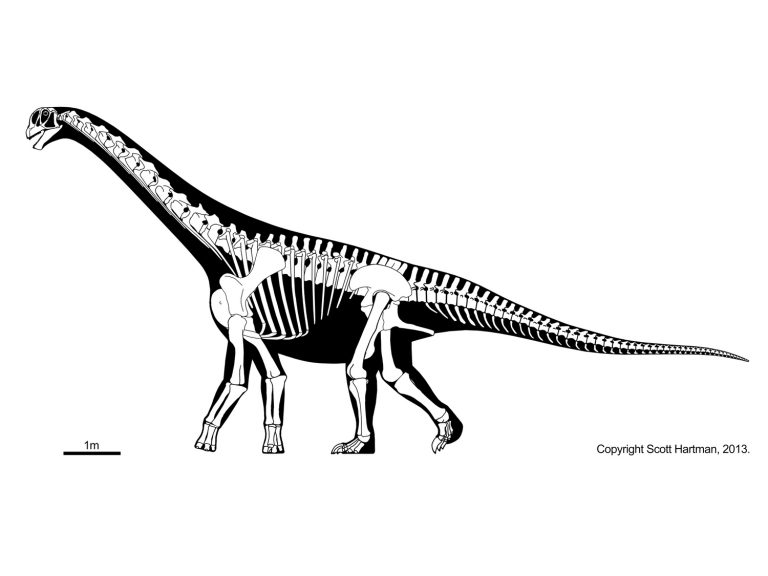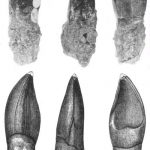Meaning
Probably comes from the Greek ‘hoplon’, meaning armour or shield, Lizard
Length
22 to 25 metres (72 to 82 ft)
Classification
Sauropoda,
?Camarasauridae Cope, 1877
‘Oplosaurus armatus’ Gervais, 1852
A long-necked sauropod dinosaur, Oplosaurus was a browser, eating tough vegetation with its chisel-like teeth. It was probably only a visitor when it died, as there was insufficient vegetation to support a sauropod population.
The only definitely identified specimen is a single tooth, most likely found in the Wessex Formation at Brighstone Bay. The crown of the tooth has a pointed apex and is labio-lingually compressed with a slightly concave lingual surface, and the root is cylindrical. There are likely to be some visible wear facets.
The tooth is very similar to that of Brachiosaurus, except the vertical ridge on the labial side of the tooth is restricted to the tip of the crown, although they have recently been assigned to the Camarasauridae, and there are also those who think it is of unknown affinity.
Material is rare, so please report it if you find some…
NAISH, D. and MARTILL, D. M. 2001d. Saurischian dinosaurs 1: sauropods. In MARTILL, D. M. and NAISH, D (eds). Dinosaurs of the Isle of Wight. The Palaeontological Association. Field Guide to Fossils 10. 185-.241.
NAISH, D., MARTILL, D. M., COOPER, D. AND STEVENS, K. 2004. Europe’s largest dinosaur? A giant brachiosaurid cervical vertebra from the Wessex Formation (Early Cretaceous) of southern England. Cretaceous Research, 25, 787-795.


